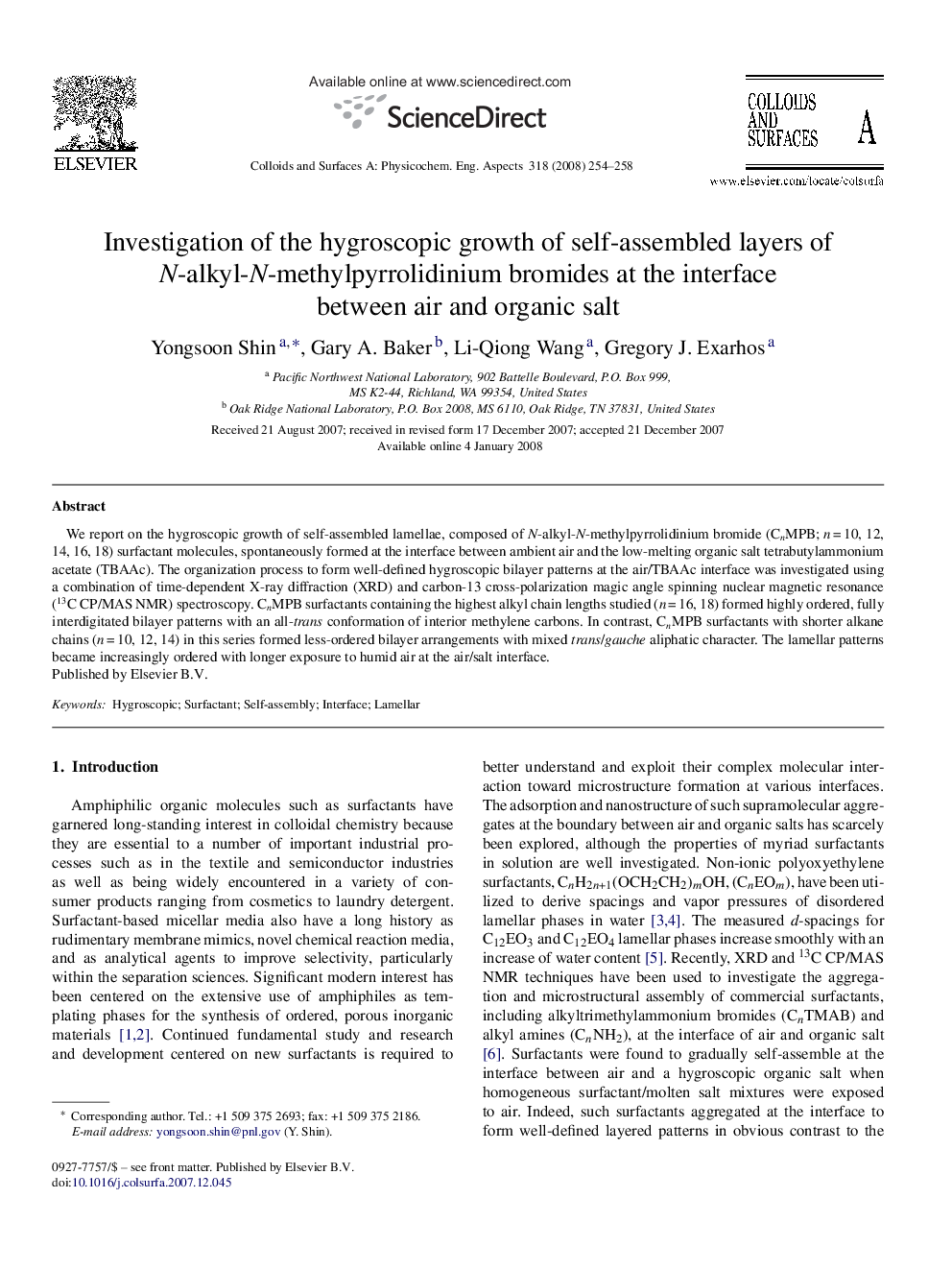| کد مقاله | کد نشریه | سال انتشار | مقاله انگلیسی | نسخه تمام متن |
|---|---|---|---|---|
| 597090 | 1454054 | 2008 | 5 صفحه PDF | دانلود رایگان |

We report on the hygroscopic growth of self-assembled lamellae, composed of N-alkyl-N-methylpyrrolidinium bromide (CnMPB; n = 10, 12, 14, 16, 18) surfactant molecules, spontaneously formed at the interface between ambient air and the low-melting organic salt tetrabutylammonium acetate (TBAAc). The organization process to form well-defined hygroscopic bilayer patterns at the air/TBAAc interface was investigated using a combination of time-dependent X-ray diffraction (XRD) and carbon-13 cross-polarization magic angle spinning nuclear magnetic resonance (13C CP/MAS NMR) spectroscopy. CnMPB surfactants containing the highest alkyl chain lengths studied (n = 16, 18) formed highly ordered, fully interdigitated bilayer patterns with an all-trans conformation of interior methylene carbons. In contrast, CnMPB surfactants with shorter alkane chains (n = 10, 12, 14) in this series formed less-ordered bilayer arrangements with mixed trans/gauche aliphatic character. The lamellar patterns became increasingly ordered with longer exposure to humid air at the air/salt interface.
Journal: Colloids and Surfaces A: Physicochemical and Engineering Aspects - Volume 318, Issues 1–3, 1 April 2008, Pages 254–258